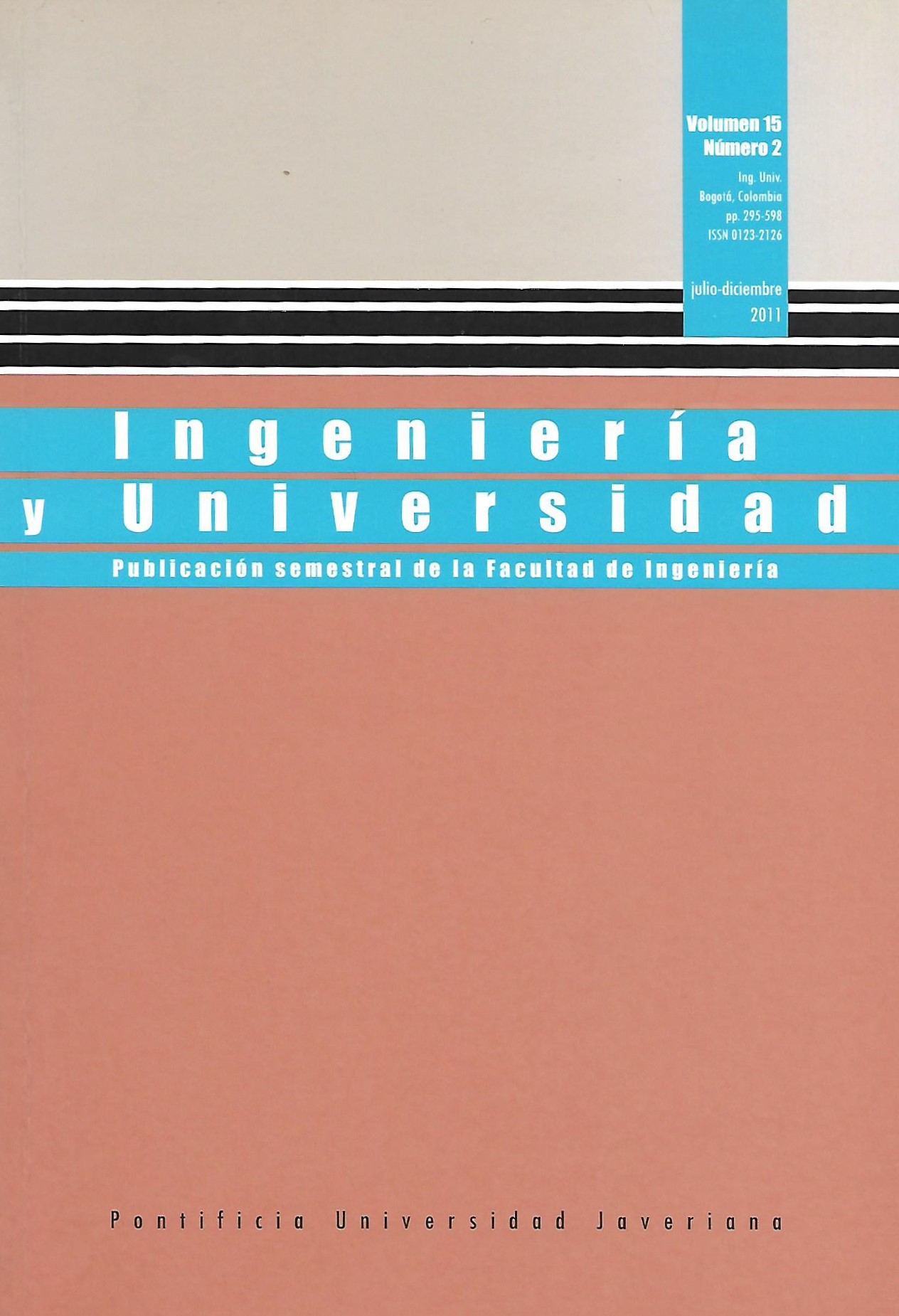Abstract
This paper presents an approach for time varying non-linear channel equalization based on fuzzy systems and single-neuron training. The method consists of two stages: the first one uses supervised learning in order to determine channel states and to provide an initial tuning of the fuzzy equalizer parameters. The second one dynamically adjusts the equalizer to follow the varying behavior of the channel through unsupervised learning. This proposal is compared with a radial basis network over the equalization of a time-varying communication channel reported in previous works. Experiments are carried out through Monte Carlo simulations. Results show that the proposed approach presents a performance than that of a radial basis function in terms of the bit error rate of a communication system.
BISHOP, C. M. Neural networks for pattern recognition. Oxford: Oxford University Press. 1995.
CHEN, S.; MULGREW, B. y GRANT, P. M. A clustering technique for digital communications channel equalization using radial basis function networks. Neural Networks, IEEE Transactions on. 1993, vol. 4, núm. 4, pp. 570-590.
FIGUEROA, J. A. y CORRALES, D. A. Realización hardware de un algoritmo de sintonía automática para ecualizadores difusos de canales de comunicación no lineales de orden Dos. Ingeniería. 2006a, pp. 68-74.
HAYKIN, S. Neural networks. A comprehensive foundation. Upper Saddle River, NJ: Prentice Hall PTR, 1999.
LEE, K. Y. Complex fuzzy adaptive filter with LMS algorithm. Signal Processing, IEEE Transactions on. 1996, vol. 44, núm. 2, pp. 424-427.
LIANG, Q. y MENDEL, J. M. Equalization of nonlinear time-varying channels using type-2 fuzzy adaptive filters. Fuzzy Systems, IEEE Transactions on. 2000, vol. 8, núm. 5, pp. 551-563.
MULGREW, B. Applying radial basis functions. Signal Processing Magazine, IEEE. 1996, vol. 13, núm. 2, pp. 50-65.
OLARTE, F.; LADINO, P. y MELGAREJO, M. Hardware realization of fuzzy adaptive filters for non linear channel equalization. Circuits and Systems, 2005. ISCAS 2005. IEEE International Symposium on. 2005, vol. 2, pp. 932-935.
PATRA, S. K. y MULGREW, B. Efficient architecture for Bayesian equalization using fuzzy filters. Circuits and Systems II: Analog and Digital Signal Processing, IEEE Transactions on. 1998, vol. 45, núm. 7, pp. 812-820.
PROAKIS, J. G. Digital communications. New York: McGraw-Hill, 2001.
WANG, L. X. A course in fuzzy systems and control. Upper Saddle River, NJ: Prentice-Hall Int, 1997.
WANG, L.-X. y MENDEL, J. M. Fuzzy adaptive filters, with application to nonlinear channel equalization. Fuzzy Systems, IEEE Transactions on. 1993, vol. 1, núm. 3, pp. 161-170.
This journal is registered under a Creative Commons Attribution 4.0 International Public License. Thus, this work may be reproduced, distributed, and publicly shared in digital format, as long as the names of the authors and Pontificia Universidad Javeriana are acknowledged. Others are allowed to quote, adapt, transform, auto-archive, republish, and create based on this material, for any purpose (even commercial ones), provided the authorship is duly acknowledged, a link to the original work is provided, and it is specified if changes have been made. Pontificia Universidad Javeriana does not hold the rights of published works and the authors are solely responsible for the contents of their works; they keep the moral, intellectual, privacy, and publicity rights.
Approving the intervention of the work (review, copy-editing, translation, layout) and the following outreach, are granted through an use license and not through an assignment of rights. This means the journal and Pontificia Universidad Javeriana cannot be held responsible for any ethical malpractice by the authors. As a consequence of the protection granted by the use license, the journal is not required to publish recantations or modify information already published, unless the errata stems from the editorial management process. Publishing contents in this journal does not generate royalties for contributors.


